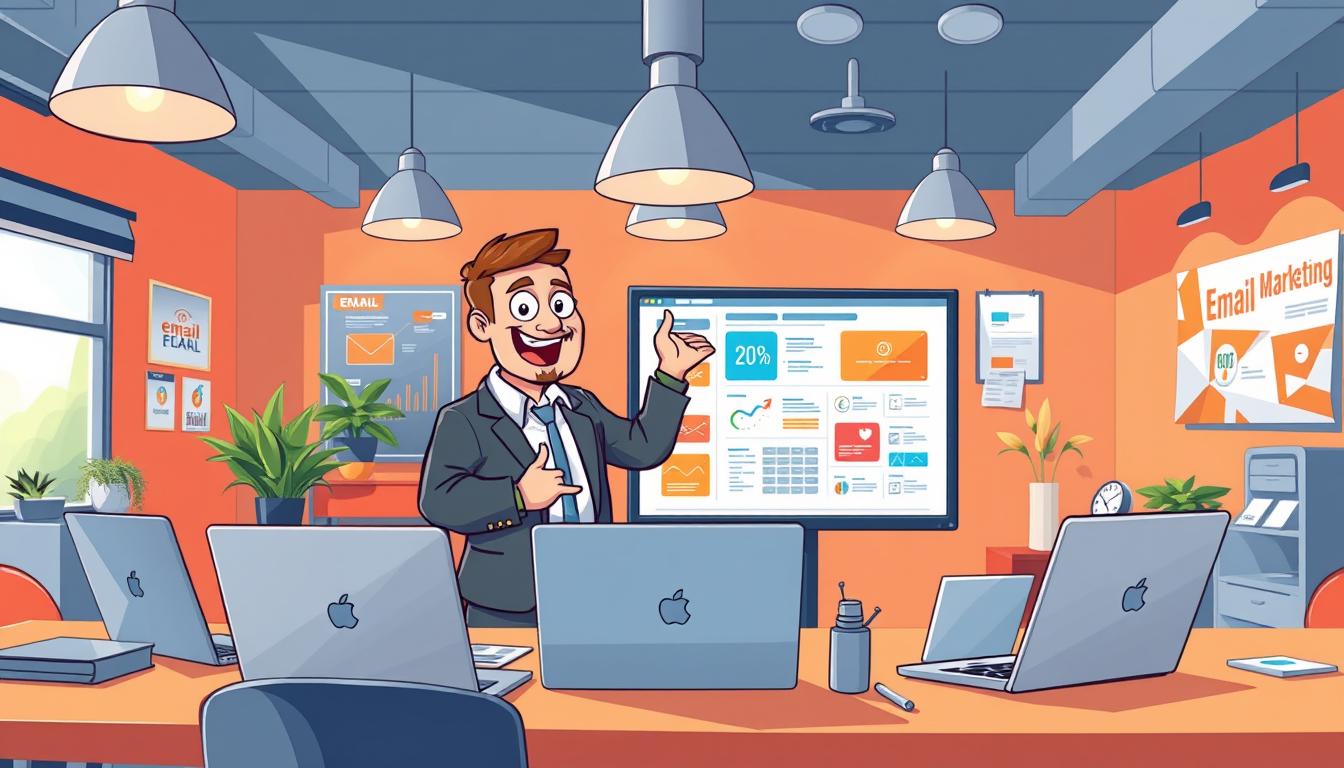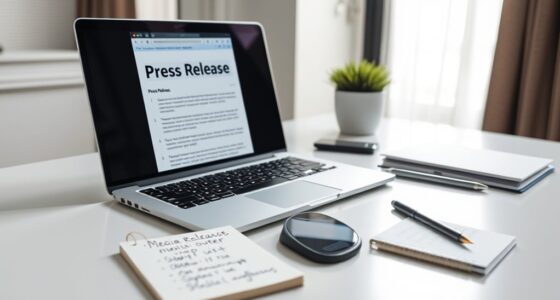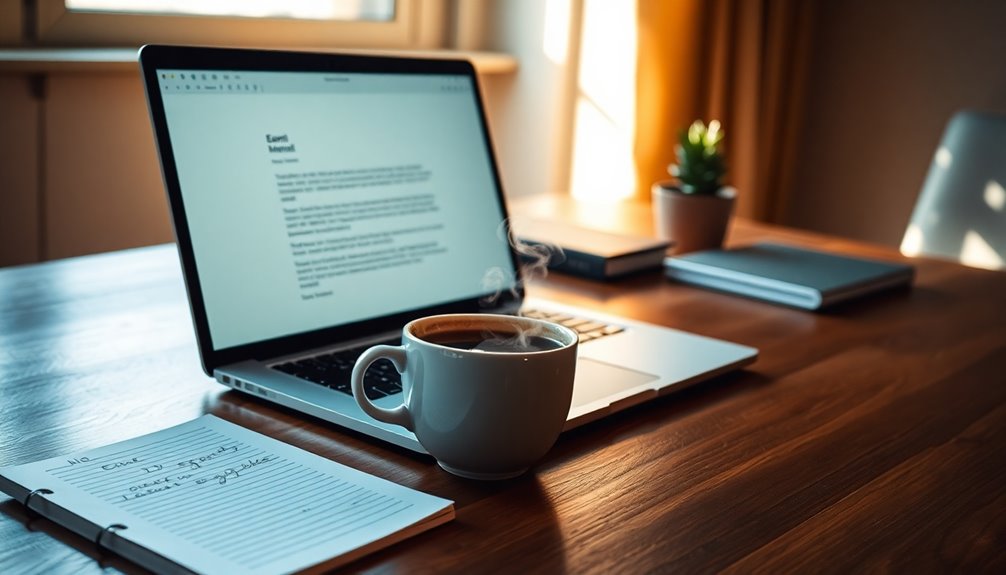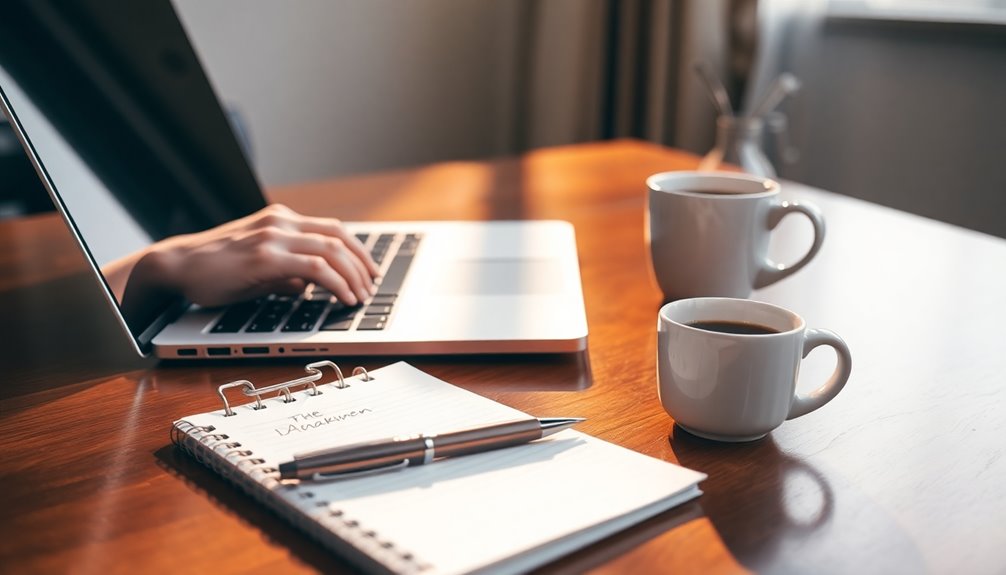To write a professional email that commands attention, start with a clear and compelling subject line that reflects your message's purpose. Address the recipient respectfully, using their name to personalize your approach. Keep your email concise, aiming for under 150 words, and structure it with short paragraphs or bullet points for readability. Highlight your key points and include a specific call to action to encourage a response. Be mindful of your tone and proofread to avoid typos. Mastering these elements can make your emails more engaging and effective, setting the stage for successful communication ahead.
Key Takeaways
- Craft a compelling subject line that clearly conveys the email's purpose and piques interest to encourage opening.
- Start with a respectful greeting and personalize your message by using the recipient's name for better engagement.
- Keep the email concise, ideally under 150 words, to maintain attention and facilitate quick reading.
- Use bullet points or short paragraphs to enhance readability and highlight key information effectively.
- Conclude with a clear call to action, specifying what response or information you need from the recipient.
Introduction

In today's fast-paced digital world, sending a professional email is essential for effective communication. With 361 billion emails sent daily, your messages need to stand out and reflect professionalism.
Think of your email as a digital handshake; it's often the first impression you make. To ensure your correspondence is well-received, start with a clear subject line. Research shows that 64% of recipients decide whether to open an email based solely on this line, so make it engaging and informative.
Adopting a professional tone is equally important. Your choice of words and overall structure should convey respect and clarity, minimizing misunderstandings. This is where good email etiquette comes into play.
Organize your thoughts clearly, use appropriate greetings and closings, and keep your message concise. Responding to emails promptly—ideally within 24-48 hours—also shows respect for the recipient's time and strengthens professional relationships.
Builds Professional Credibility

A professional email not only conveys your message but also builds your credibility. When you send well-structured professional emails, you represent both yourself and your organization. This representation can significantly influence client perceptions and create career opportunities.
By using clear subject lines, proper greetings, and concise content, you enhance your professionalism and foster trust in your communications. Implementing email management tools can help streamline your processes and improve consistency in your emails. Adhering to email etiquette is crucial; it shows attention to detail and respect for your recipients. Additionally, understanding the importance of user consent management can enhance your communication strategy when dealing with sensitive information. Keeping in mind the principles of technical SEO can also improve your email outreach effectiveness. Furthermore, employing effective communication strategies can ensure that your message resonates with your audience.
Avoiding common mistakes like typos or vague messages strengthens your professional relationships and ensures your first impression is positive. Responding promptly and concisely demonstrates that you value the recipient's time, which contributes to a favorable professional image.
To maintain consistency in your correspondence, consider utilizing email management tools and templates. These resources not only streamline communication processes but also enhance your overall professionalism. Additionally, leveraging free tools like MozBar can help in ensuring your emails are well-structured and error-free. To further optimize your email strategy, an email list template for pros can be an invaluable resource for organizing recipients and crafting targeted messages. By segmenting your audience and utilizing pre-designed templates, you can save time while ensuring your content remains relevant and impactful. This approach not only fosters stronger engagement but also contributes to building lasting relationships with your audience.
Audience Awareness
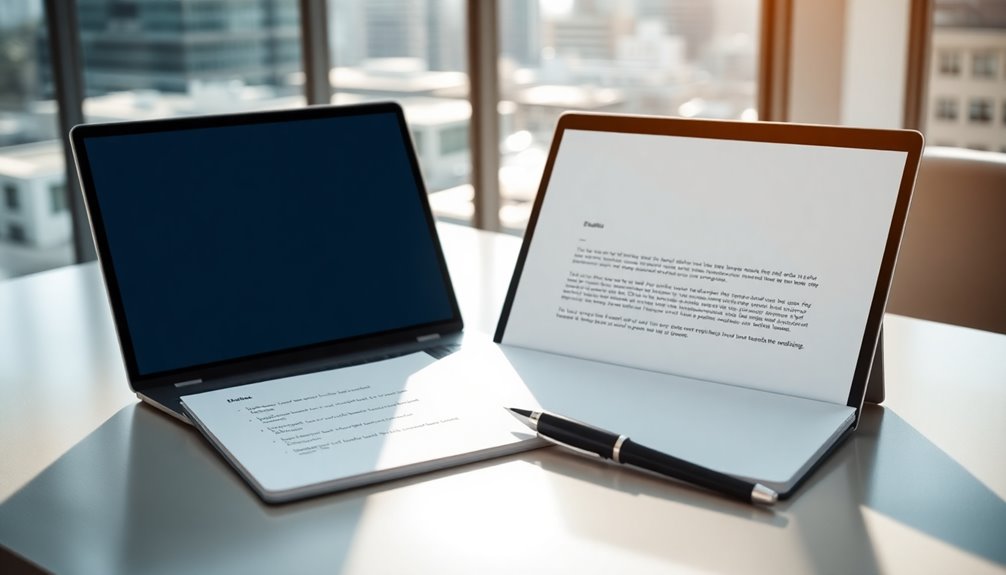
Understanding your audience is vital for effective email communication. When you tailor your message to meet their preferences, you increase the chances of engagement. For instance, since 62% of employees prefer emails for client interactions, it's essential to keep your communication clear and efficient. Additionally, leveraging insights from online reputation management can help you better understand the perceptions and preferences of your audience. Incorporating AI-driven analysis can further enhance your ability to tailor messages that resonate. Furthermore, understanding financial considerations for elderly care can provide context for discussions when your audience includes caregivers or families dealing with elderly care needs.
In a professional setting, adjusting your language and tone based on the recipient's familiarity and position can strengthen your relationship. Personalization techniques, like using the recipient's name or referencing specific details, can significantly enhance response rates. Furthermore, utilizing freelance platforms can provide insights into the types of communication styles that resonate with different audiences.
Moreover, be mindful of cultural differences. Misunderstandings can arise from varying communication styles, which can damage professional relationships.
Segmenting your audience is another powerful strategy. By targeting specific groups, you craft more relevant messages that resonate, leading to improved open rates and overall effectiveness. Utilizing A/B testing for subject lines can help you figure out what works best for each segment. Additionally, analyzing cart abandonment rates can offer insights into how audience preferences shift, enabling you to adjust your email strategies accordingly.
Ultimately, audience awareness shapes how you communicate and can help ensure that your emails achieve their intended purpose. By knowing who you're writing to, you can deliver messages that truly command attention.
Step-by-Step Guide to Writing Follow-Ups

Crafting an effective follow-up email can significantly enhance your communication and relationship with the recipient. Aim to send your follow-up within 24-48 hours after your initial interaction. This shows promptness and respect for their time.
Start with a concise subject line that clearly indicates the purpose of your email, like "Following Up on Our Discussion." This helps grab attention and increases open rates.
In the body of your follow-up email, reference the previous communication to provide context. Briefly remind the recipient of the specifics of your conversation, making it easier for them to recall the details.
Keep it brief—ideally under 150 words—to maintain their interest and encourage a timely response.
Dos and Don'ts for Follow-Ups

When it comes to follow-ups, knowing the dos and don'ts can make all the difference in your communication. First, always follow up within 24-48 hours after your initial email. This shows respect for the recipient's time and maintains momentum. When you do, clearly reference the original email to provide context and remind them of the subject matter.
Use a professional tone in your follow-up. This reinforces your credibility and helps build a positive relationship. If you haven't received a response, consider rephrasing your request for information or adding additional details to encourage engagement. This can make it easier for the recipient to respond. Additionally, leveraging data-driven decision-making can help you craft more effective follow-up messages that resonate with your audience. Furthermore, demonstrating strong communication skills can significantly enhance the clarity of your message and foster a better rapport with the recipient.
On the flip side, avoid excessive follow-ups. Limit yourself to two or three attempts before moving on. Over-communication can easily come across as pushy and may harm your professional image.
Examples of Follow-Up Emails
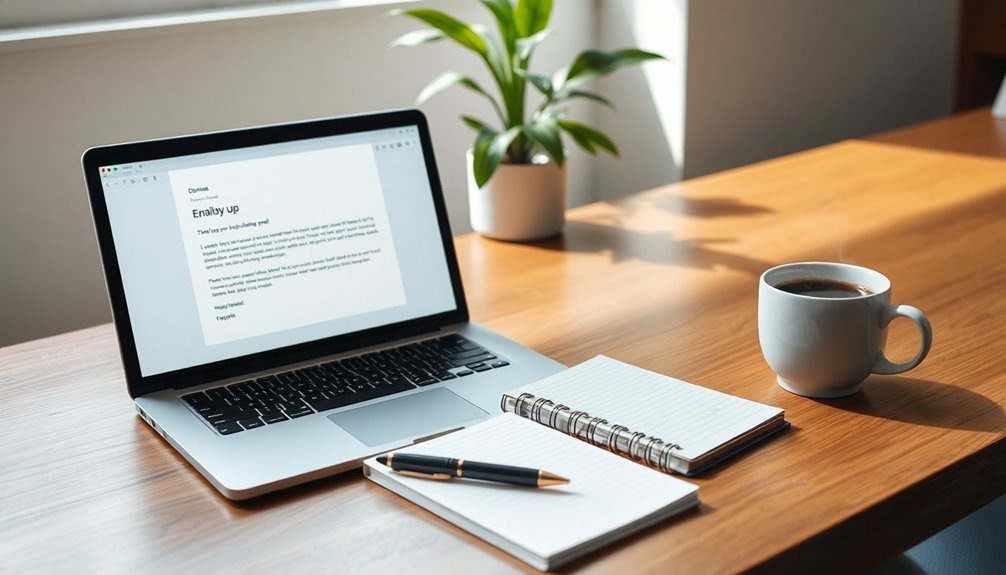
Follow-up emails are essential tools for maintaining professional relationships and ensuring clear communication. When crafting your follow-up, start with a clear subject line that reflects the purpose, like "Following Up on Our Last Discussion." This immediately informs the recipient about the email's intent.
Next, include a concise recap of your previous interaction. For example, you might say, "I wanted to touch base regarding our conversation about the marketing proposal we discussed last week." This reminder will help the recipient recall the context.
A specific call to action is crucial. You could write, "Could you let me know if you have any updates on the proposal by Friday?" This prompts a timely response and keeps the conversation moving forward.
Personalization can significantly enhance your email's effectiveness. Mentioning the recipient's name or specific details from your last discussion can make your follow-up feel more genuine. Additionally, employing effective communication strategies can lead to stronger professional relationships and better collaboration outcomes.
Pro Tips for Writing Effective Emails
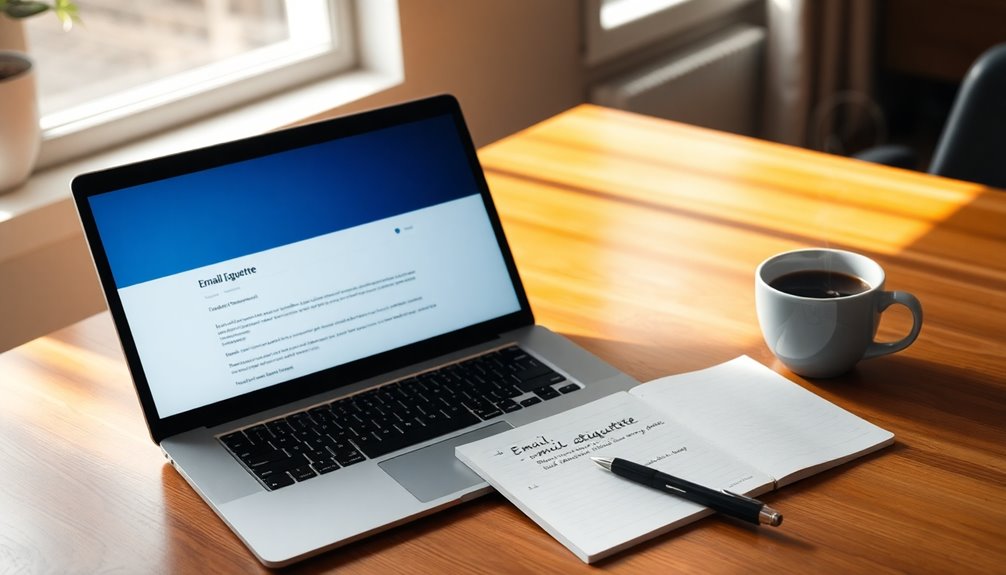
Writing effective emails is crucial in today's fast-paced professional environment. To make your professional email stand out, start with clear subject lines. Remember, 64% of recipients decide how to act based on them, so ensure they convey your email's purpose without ambiguity.
Next, maintain a professional tone throughout your message. Avoid slang and complex language, as a polite demeanor significantly influences how your message is received.
Keep your emails concise, ideally under 150 words, to respect the recipient's time while delivering all necessary information.
Structure your email for readability. Use short paragraphs and bullet points to make key points easier to digest. This not only aids comprehension but also keeps the recipient engaged. Additionally, consider employing compelling subject lines to enhance your open rates and attract attention to your emails.
Final Thoughts
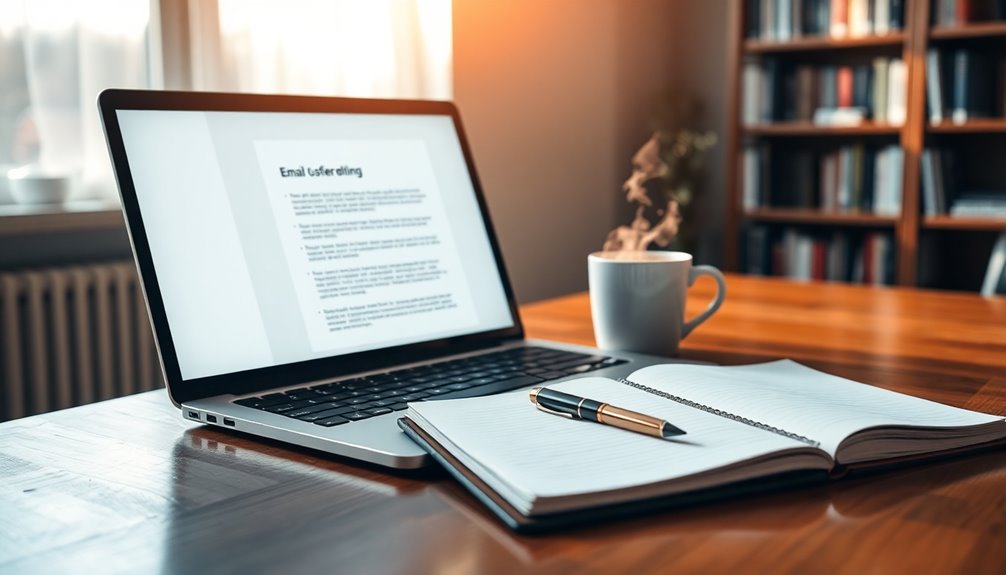
Crafting professional emails is a skill that can significantly impact your communication effectiveness. Start with a compelling email subject line, as 64% of recipients base their actions on it.
A clear, concise greeting sets a respectful tone, which is vital for fostering strong professional relationships.
Structure your email body into short paragraphs and use bullet points to enhance readability. This approach makes it easier for recipients to grasp key information quickly.
Don't forget to incorporate a well-defined call to action; it guides the recipient's response and encourages engagement, showing you value their time and attention.
Before hitting send, consistently proofread your email for grammatical accuracy and clarity. This step significantly reduces misunderstandings and boosts your professional image.
Frequently Asked Questions
How Do You Indicate Attention in an Email?
To indicate attention in an email, start with a compelling subject line that clearly summarizes your message.
Personalize your email by using the recipient's name to engage them directly.
Begin with a concise opening that captures their interest immediately.
Use formatting techniques, like bullet points or bold text, to emphasize key points.
How Do You Politely Ask for Attention in an Email?
To politely ask for attention in an email, start with a clear subject line that reflects your purpose.
Use a respectful salutation to set the right tone.
In your opening sentence, state your request directly to engage the reader.
Make sure to include a polite call to action, specifying what you need from them.
Keep your email concise and well-structured, respecting their time and making it easy to understand your message.
How Do You Write an Attention Grabbing Email?
To write an attention-grabbing email, start with a compelling subject line that clearly states your purpose.
Personalize your greeting to connect with the reader, then quickly highlight the benefits they'll gain from your message.
Keep it brief and structured, using bullet points for clarity.
Consider adding a thought-provoking question or an intriguing statement to spark curiosity.
This approach encourages engagement and prompts quicker responses from your recipients.
How Do You Write Special Attention in an Email?
To write an email that grabs special attention, start with a striking subject line that hints at the email's importance.
Personalize your message by using the recipient's name and relevant details.
Begin with a strong opening statement that piques interest.
Use bullet points for clarity, ensuring key information stands out.

